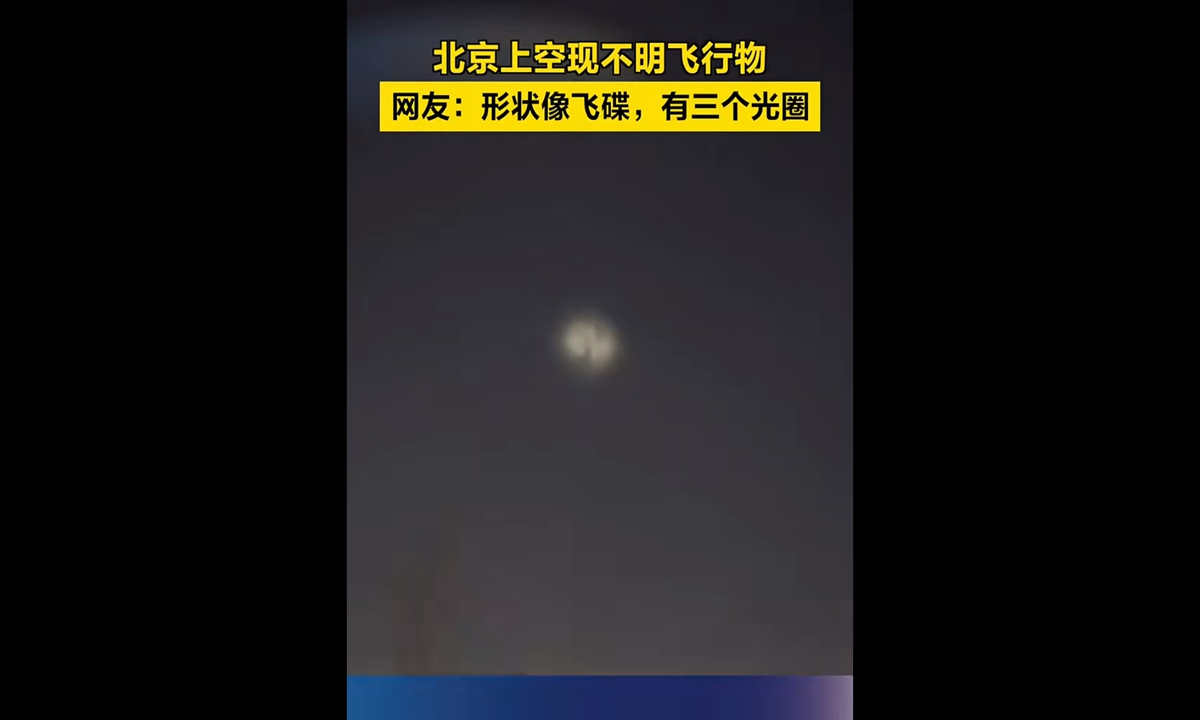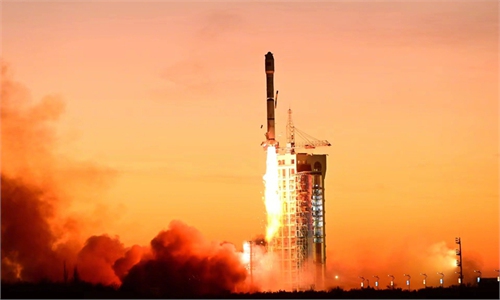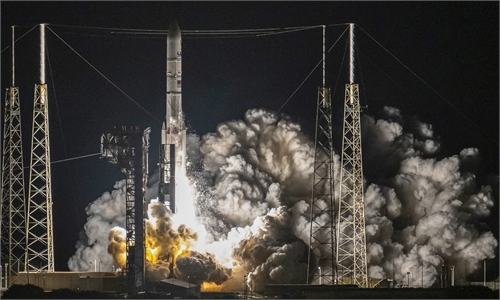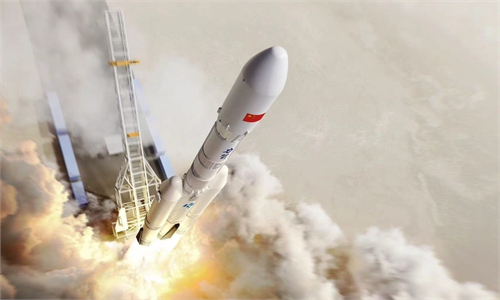Unidentified flying object seen over several cities in China to be SpaceX rocket carrying Starlink satellites: experts

Photo: Screenshot from the Beijing Daily
After netizens in several parts of China captured footage of an unidentified flying object in the sky on Sunday, experts stated that this phenomenon was caused by the passivation process of the rocket launched by SpaceX carrying Starlink satellites over North China, according to media reports on Monday.
Netizens posted videos on Sunday claiming that an unidentified flying object were seen flying across the sky in many parts of China. Internet users in Beijing commented that the unidentified light cluster looked like a moving cloud-like object, but it was definitely not an airplane.
"The glowing object had three light sources arranged in an isosceles triangle, and it dispersed like a mist and disappeared without a trace," another netizen wrote.
People from North China's Hebei and Shanxi provinces also reported seeing the flying object and described it as resembling a large mosquito, and some questioned whether it was a rocket launch.
In response to the doubts of netizens, Zhu Jin, a researcher from the Beijing Planetarium, stated that the unidentified flying object was a phenomenon caused by the passivation treatment of the rocket carrying the Starlink satellites launched by SpaceX at 16:59 on Sunday Beijing time passing over North China, according to the Beijing News on Monday.
Zhu said that passivation treatment can be seen as the process of the rocket discarding unused fuel. When a rocket completes its mission, there is usually leftover fuel, which is not brought back to Earth with the rocket. Instead, the remaining fuel from the final stage of the rocket is vented through passivation treatment to prevent explosions.
According to the China Newsweek, Yang Yuguang, Vice Chair of the Space Transportation Committee at the International Astronautical Federation, further explained that passivation treatment is a common practice by major countries to mitigate the space debris, which includes three aspects: emptying the remaining propellant, releasing gas from high-pressure cylinders, and discharging the electrical energy from its batteries. These three aspects are all aimed at avoiding the danger caused by self-explosion of the rocket's final stage, according to Yang.
The expert stated that currently, humans use multi-stage rockets to deliver payloads, such as satellites, spacecraft and space stations, into orbit around the Earth. The batteries are used in the last stage of the launch vehicle, and once the battery power is depleted, the spacecraft loses all functionality and becomes space junk, which is detrimental to the mitigation of space debris. The space junk may collide with other spacecraft or explode itself, generating more and larger space debris, Yang said.
Under normal circumstances, when people observe the final stage of a launch vehicle passing through a certain area, it appears as a bright spot, which is actually a reflection of sunlight. It can be seen only if the sky is not too bright and it must be able to be illuminated by the sun, so it is more likely to see the artificial spacecraft during dawn and dusk, Yang noted.
According to the SpaceX website, Falcon 9 launched 22 Starlink satellites to low-Earth orbit at 12:59 am Pacific Time Sunday and 23 Starlink satellites at 8:52 pm US Eastern Time Sunday.
Global Times



